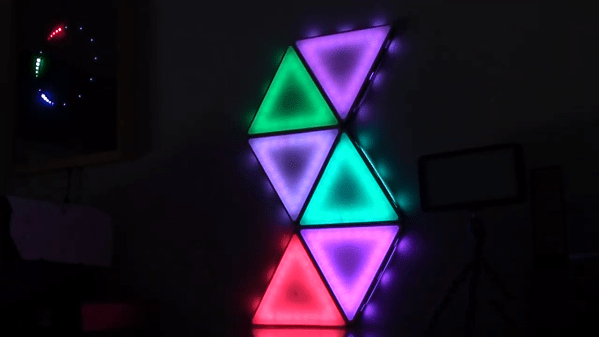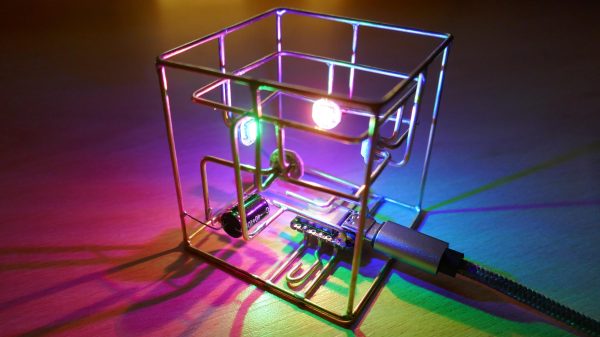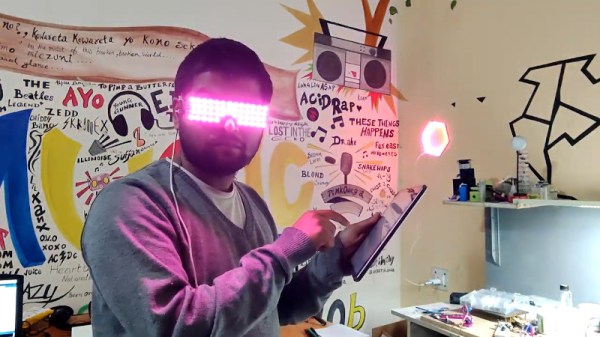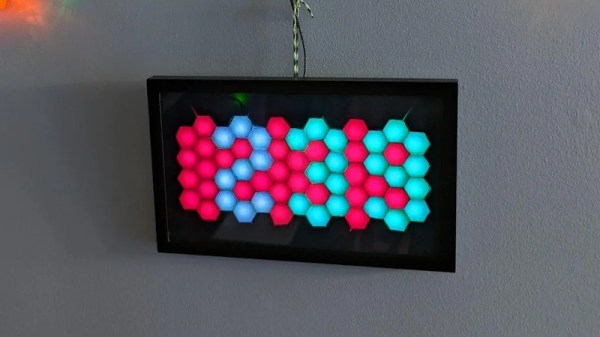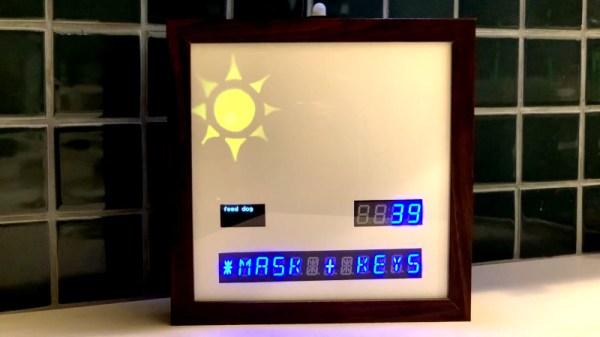Nanoleaf light panels are a popular product for creating glowing geometric designs on walls. However, for those that like to avoid IoT devices that integrate with big cloud services, they’re not ideal, and involve compromising on one’s privacy, somewhat. [Viktor] decided to build something of his own instead to avoid this problem.
The design is that of an equilateral triangle, which allows the panels to tesselate well. Each panel consists of two 3D printed parts. The black PLA base holds the WS2812B LED strips, cabling, and ESP8266 controller, while a white PLA cover goes over the top, which acts as a diffuser to spread the light from the individual LEDs. Each triangle contains 24 LEDs, and six triangles together consume around 1.6 amps when in use.
The benefit of the system is that it’s not controlled from a company’s cloud system, which can be shutdown at any time. [Viktor’s] setup runs entirely independently, and can be controlled from a simple web page. Plus, there’s nothing stopping him from modifying the code to use the panels for any purpose; commercial products like Nanoleaf don’t offer anywhere near the flexibility of building your own.
We’ve seen others build their own smart lighting with similar techniques before, too. Video after the break.
Continue reading “DIY Nanoleaf LED Panels Offer Peace Of Mind”

